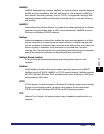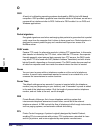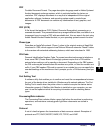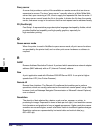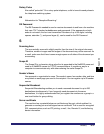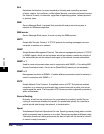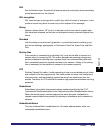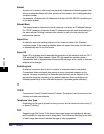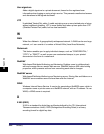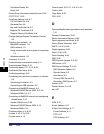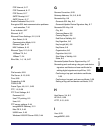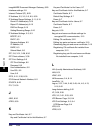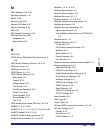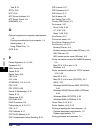
Glossary
8-41
8
Appendix
Tone
Some data services may require that you use tone dialing. If you have a pulse dial
telephone, press [Tone] to switch temporarily from pulse to tone dialing when
connecting to these data services.
Transmission Time
A fax transmission consists of three stages: the machine that sends the fax connects
with the machine receiving it; the fax is then transmitted, after which the sender and
the recipient exchange signals to confirm the end of transmission. The transmission
time described in this guide is not the total time required for the entire send/receive
transaction, but only the time it takes for the machine to transmit the fax document.
TTI
Transmit Terminal Identification. Also called the TX Terminal ID. The TTI is the name
of a person or an organization and the facsimile number of the machine that sends a
document. In addition to the unit name that you register for the machine, you can
create up to 99 sender names that can be used in place of the unit's name when you
send a fax document.
TX
Abbreviation for "Transmission/Sending."
U
UAA
Universally Administered Address. See LAA.
UFR II
Ultra Fast Rendering II. A printing algorithm for realizing high-speed rendering. UFR
II enables processing tasks to be executed and divided appropriately between the
host PC and the printer to greatly reduce overall printing time.
Ultra Fine
A resolution mode for sending originals at 16 dots/mm x 15.4 lines/mm (eight times
the standard resolution). If the receiving fax machine does not support this mode, the
original is automatically sent in the Super Fine or Fine mode.
URL
Uniform Resource Locator. A standard way of specifying the location of an object,
usually a Web page on the Internet. The URL for a Web page would look something
like this: "http://www.w3.org/default.htm". Here, "http:" indicates that a Web page is
being accessed, "www.w3.org" is the address of the server containing the Web page,
and "default.htm" is the file name under which the Web page is stored on the server.



